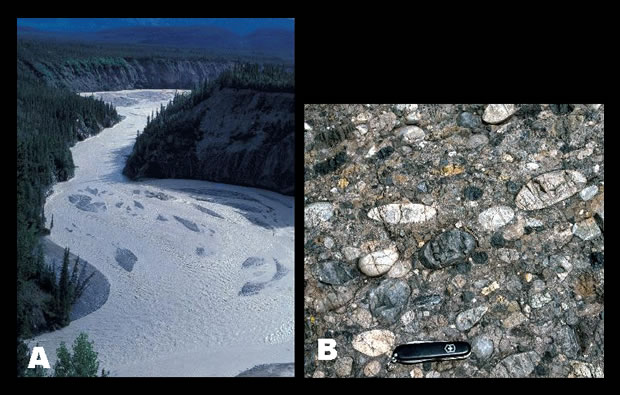
This river (A) carries so much sediment that there are places in the middle where islands of sand and gravel poke up above the water. Large pieces of sediment, like sand and gravel, are typically deposited in a fast moving river while smaller particles of sediment are carried away. The sediment is tumbled around in the river and eventually each piece becomes rounded like in the rock shown in (B). This sedimentary rock is called conglomerate. It was once the sediment in the bottom of a river.
Back to the Table of Environments








